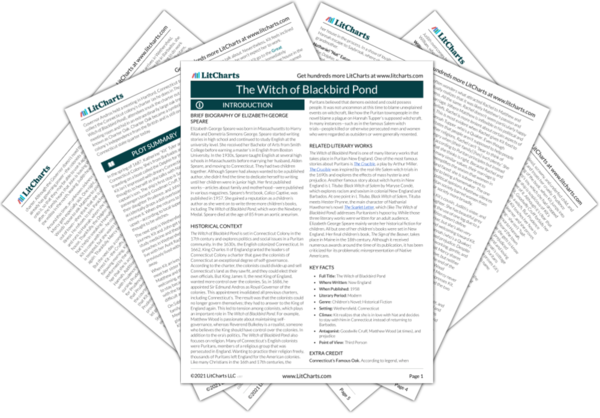Next
Summary
The Witch of Blackbird Pond Study Guide |
Next
Summary
|
Welcome to the LitCharts study guide on Elizabeth George Speare's The Witch of Blackbird Pond. Created by the original team behind SparkNotes, LitCharts are the world's best literature guides.

Connecticut’s Famous Oak. According to legend, when Governor Andros held a meeting in Hartford, Connecticut to collect the Connecticut colony’s charter (as he does in The Witch of Blackbird Pond), attendees snuck the charter out of the meeting room and hid in an extraordinarily large oak tree, now known as Charter Oak. Charter Oak became a symbol of the colony’s independence from the British and is still on the Connecticut state quarter today.